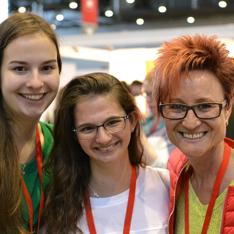S. Trapero-Asenjo1, S. Fernández-Guinea2, J. González-Marqués2, S. Nunez-Nagy1
1University of Alcalá, Department of Nursing and Physiotherapy, Alcalá de Henares, Spain, 2Complutense University, Department of Experimental Psychology, Cognitive Processes and Speech Therapy, Madrid, Spain
Background: Anxiety is characterised by an intense feeling of tension concerning possible future adverse events. It can be understood as a temporary state or an individual trait or predisposition. Both types of anxiety seem to have different implications. However, they also seem correlated and have adverse effects on limbic structures involved in cognitive processes such as learning and memory. The WHO indicated that anxiety disorders increased in prevalence to over 25% in the first year of the COVID-19 pandemic, with a particular impact on young people. This increases the probability of encountering patients suffering from anxiety states within different clinical physiotherapy contexts.
Motor Imagery (MI) is a complex cognitive process of the internal representation that retrieves motor actions in working memory. Its use has exponentially increased in sports and rehabilitation mainly because of its facilitating role in movement performance and learning. Research has attempted to establish practical guidelines to increase their effectiveness in implementation. It has been proven that MI can regulate emotions, but so far, it is unknown how anxiety can influence the ability to perform mental tasks.
Motor Imagery (MI) is a complex cognitive process of the internal representation that retrieves motor actions in working memory. Its use has exponentially increased in sports and rehabilitation mainly because of its facilitating role in movement performance and learning. Research has attempted to establish practical guidelines to increase their effectiveness in implementation. It has been proven that MI can regulate emotions, but so far, it is unknown how anxiety can influence the ability to perform mental tasks.
Purpose: The main objective was to explore whether state anxiety influenced MI ability and the maintenance of temporal characteristics of MI in non-experienced imagers.
Methods: Twenty-eight healthy volunteers (19.43+2.28 years; 21 females) unfamiliar with MI were recruited by non-probabilistic consecutive sampling. After performing the State-Trait Anxiety Inventory (STAI) regarding state anxiety, 14 subjects with a percentile >75 and 14 with <75 were selected. Subsequently, all subjects completed the Movement Imagery Questionnaire-3 (MIQ-3) to measure subjective MI ability on the kinesthetic and internal and external visual subscales. Simultaneously, the experimenter recorded with a stopwatch the execution and imagery times of each MIQ-3 item according to the participants' start and end commands. The discrepancy between the two times was then calculated to assess the temporal characteristics of MI. The study was approved by the Ethics Committee of Research and Animal Experimentation of the University of Alcalá with code CEID2022/2/036.
Results: Mixed factorial ANOVA for the MIQ-3 subjective scores showed a significant main effect of subscale (F(2,52)=8.223, p<0.01, η2=0.132), no group or subscale × group interaction effects. Mixed factorial ANOVA for the discrepancy values (|execution time - imagination time|) showed a significant main effect of group (F(1,25)=5.97, p<0.05, η2=0.134), no subscale or interaction effects. Multiple comparisons indicated significant differences (p<0.01, d=0.76) in discrepancy values according to the state anxiety absence (M=1.27+0.36) or presence (M=1.96+0.63).
Conclusions: Non-MI experts with the self-reported presence of state anxiety seem to have greater difficulty maintaining MI's temporal characteristics than those without it. Future work should include more sample and explore how anxiety affects other dimensions of MI ability, such as vividness, and its neurophysiological processes, as well as whether subjects with anxiety should undergo any pre-MI interventions to make MI practice as effective as possible in this population.
Implications: This work presents the influence of state anxiety on MI ability. It provides a starting point for exploring how to effectively apply MI in clinical and research settings to anxious subjects, a condition with increasing prevalence today.
Funding acknowledgements: This research received no funding. It derives from a thesis conducted thanks a predoctoral position at the University of Alcalá
Keywords:
imagery
anxiety
practice guideline
imagery
anxiety
practice guideline
Topics:
Mental health
Professional practice: other
Neurology
Mental health
Professional practice: other
Neurology
Did this work require ethics approval? Yes
Institution: University of Alcalá
Committee: Ethics Committee of Research and Animal Experimentation
Ethics number: CEID2022/2/036
All authors, affiliations and abstracts have been published as submitted.

